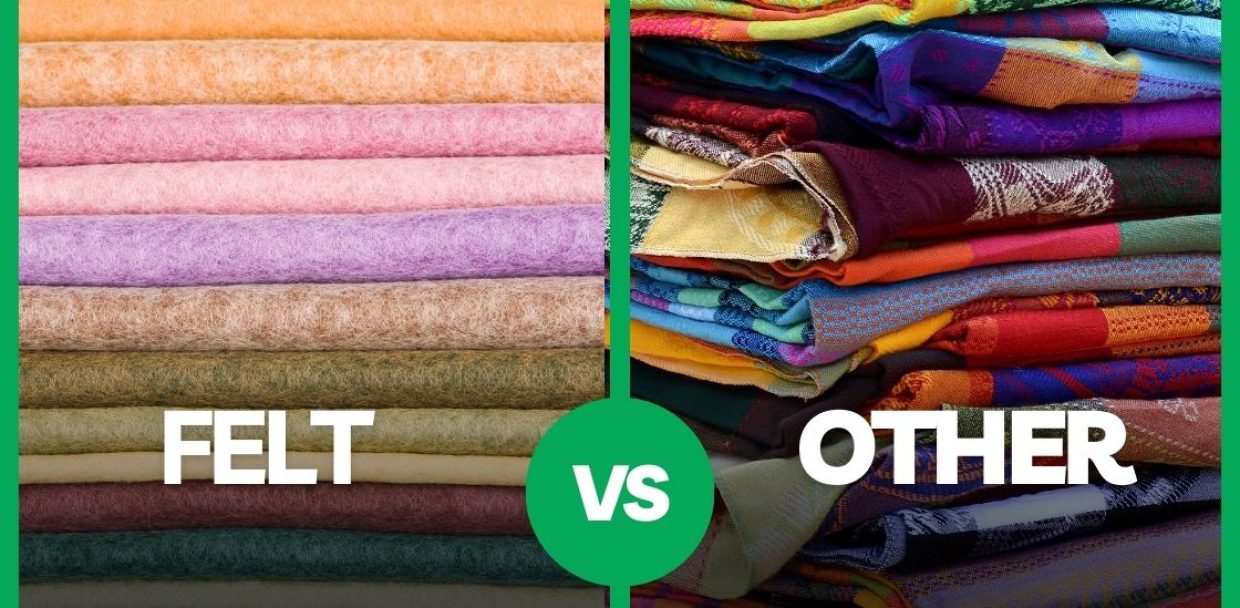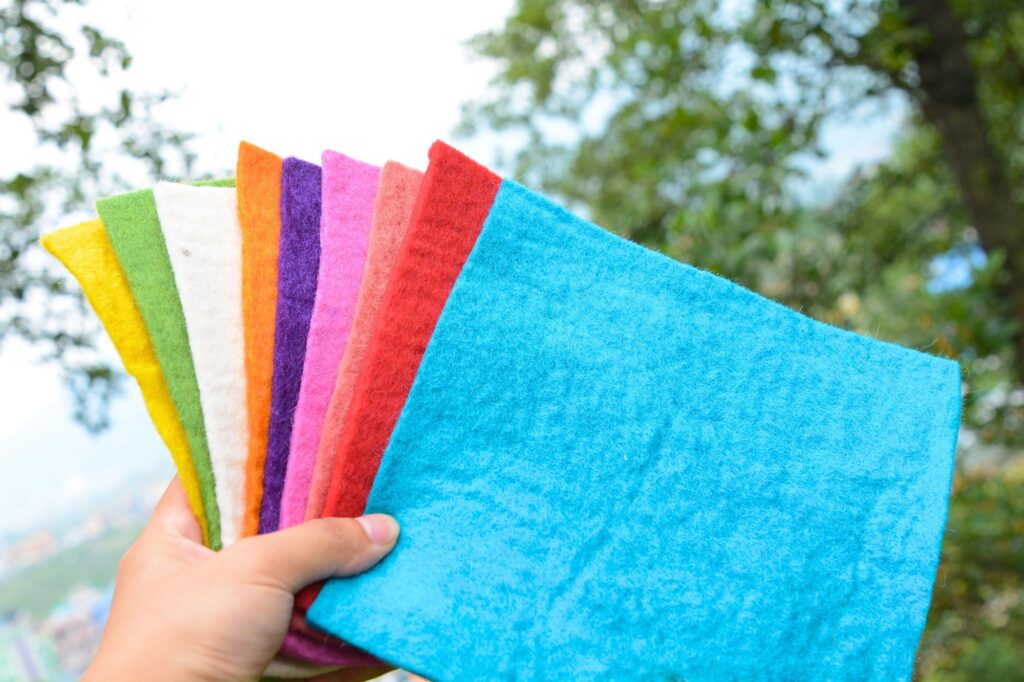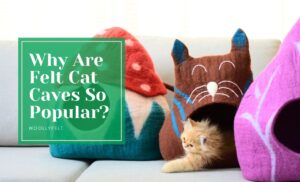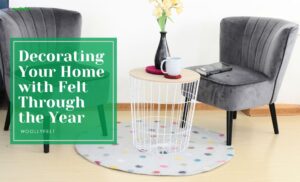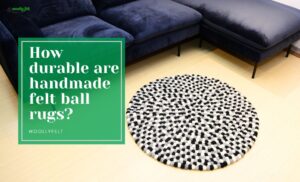While you can find numerous types of fabrics in the market, Felt has been a top choice among people around the world/
Renowned for its durability, versatility, and soft texture, offering excellent insulation and weather resistance, people have made all sorts of items from wool felt fabrics, sheets, and balls.
But do these things add up to making felt the best fabric for your requirements?
Although felt has a clear advantage over other fabrics, you need to look at the pros and cons of whatever material you choose for your project; be it DIY or commercial.
This blog post explains all the pros and cons of choosing felt over other fabrics, helping you decide whether to go with it.
Pros of Choosing Felt Fabric
Exceptional Durability
Felt fabric stands out from its counterparts due to its unique composition of compressed fibers, which grants it exceptional strength. Unlike woven or knitted fabrics, the compressed felt fibers provide a solid foundation that allows it to maintain its shape and structure over extended periods of use.
This inherent durability ensures that felt products can withstand the demands of regular use without succumbing to wear and tear, preserving their longevity and integrity. Whether it’s a cozy felt hat or a durable felt bag, you can trust that your felt creations will remain sturdy and reliable throughout their lifespan.
Superior Insulation and Weather Resistance
Felt fabric’s natural insulating properties make it a go-to choice for projects that demand effective heat or cold insulation. Whether you’re creating cozy winter garments or insulating home decor items, felt has you covered.
Additionally, its inherent ability to repel light rain and moisture add an extra layer of weather resistance, making it suitable for a wide range of applications where durability and protection are essential. From outdoor accessories to interior accents, felt is a reliable and versatile fabric that keeps you comfortable and your projects shielded from the elements.
Remarkable Versatility
The remarkable characteristic of felt fabric is its ability to be effortlessly cut, shaped, and manipulated without worrying about fraying. Whether you’re embarking on craft projects, engaging in sewing endeavors, or exploring the realm of DIY creations, felt fabric becomes your versatile companion.
Its adaptability knows no bounds, allowing you to tailor it to your requirements, whether crafting clothing, embellishing your home decor, or designing stylish accessories. Felt fabric is your gateway to a world of limitless creativity.
Softness and Comfort
Imbued with a gentle and luxuriously smooth texture, felt fabric brings a touch of elegance to your projects. Its soft surface creates an inviting and comfortable experience, making it an ideal choice for projects involving children or individuals with sensitive skin.
From creating cuddly toys, baby accessories, or delicate garments, the softness of felt ensures a cozy and soothing sensation against the skin, elevating your creations’ overall enjoyment and comfort. Embrace the gentle allure of felt fabric and indulge in a world of tactile bliss.
Eco-Friendly Choice
For the environmentally conscious, felt emerges as a sustainable choice that aligns with your commitment to the planet. Crafted primarily from natural fibers, such as renewable wool, felt fabric minimizes its environmental impact.
Furthermore, felting processes prioritize the conservation of resources by utilizing minimal chemicals and energy, amplifying its eco-friendliness. By embracing felt, you indulge in its remarkable qualities and contribute to a greener and more sustainable future.
Cons of Choosing Felt Fabric
Limited Color Range
Compared to some synthetic fabrics, felt may have a more restricted color range. While vibrant options are available, if you require specific colors outside the standard offerings, you may need to explore alternative fabric options or consider dyeing techniques.
Pilling Concerns
Over time and with heavy use, lower-quality or loosely woven felts may develop pilling—small, fuzzy balls on the fabric’s surface. However, this issue can be minimized through proper care and maintenance, such as avoiding excessive friction and utilizing lint rollers or fabric shavers. Choosing reputable brands like Woollyfelt can also alleviate pilling concerns.
Limited Stretch and Drape
Felt has inherent limitations regarding stretch and drape compared to fabrics like knits or certain woven materials. Projects requiring extensive shaping or fluidity may necessitate alternative fabrics that offer greater flexibility.
Cleaning Challenges
While generally resistant to dirt and stains, felt fabric requires specific cleaning methods for certain spills or stains. Not all types of felt can be machine-washed, and improper cleaning techniques can lead to shrinkage or distortion. It’s crucial to follow manufacturer instructions or seek professional cleaning assistance, if needed, to maintain the appearance and longevity of your felt products.
Conclusion
As you embark on your next project, consider the unique advantages and considerations of felt fabric. Its durability, insulation properties, versatility, and eco-friendliness make it an appealing choice. However, factors such as color range, pilling, stretch and drape limitations, and cleaning challenges should also be considered.
By weighing these pros and cons, you can confidently select felt or explore alternative fabric options that align with your needs and preferences.

